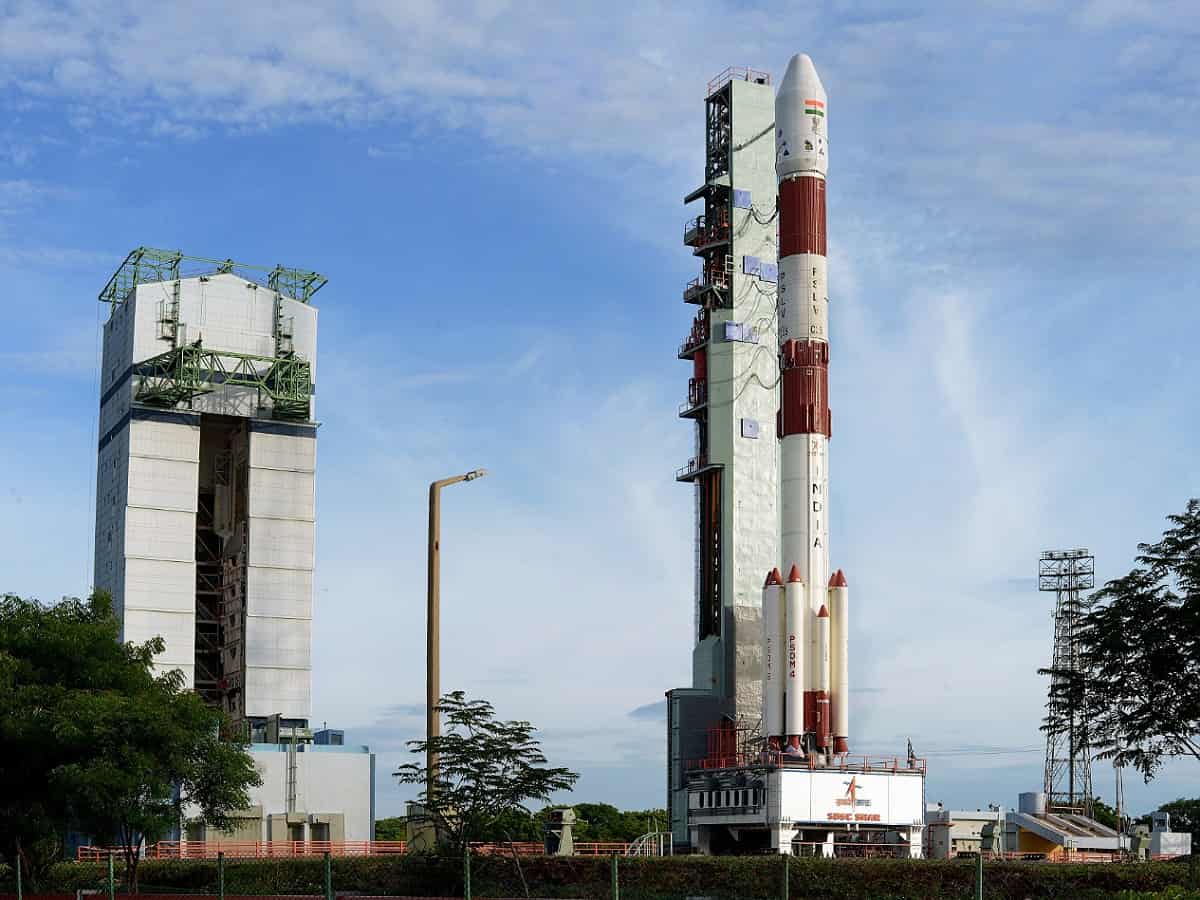
The Indian Space Research Organisation (ISRO) is all set to launch a major satellite of Singapore on Sunday morning using the ‘reliable workhorse’, the Polar Satellite Launch Vehicle (PSLV).
The launch of the DS-SAR (Synthetic Aperture Radar) satellite along with 6 Co-passengers, small satellites (all from Singapore) by the PSLV-C56 from the first launch pad of the Satish Dhawan Space Centre, SDSC-SHAR, Sriharikota is scheduled for 06:30 hrs IST.
The launch, will be the second for the ISRO in July. It comes close on the heels of the Chandrayaan-3, Moon mission on July 14. The successful launch by the heavy GSLV rocke-LVM3 put the Chandrayaan-3 spacecraft into its right orbit. It is well and smoothly on its mission to land on the lunar surface around August 21-23, with most of the manoeuvres being achieved as planned so far.
For the 4-stage PSLV rocket (liquid and solid stages), it will be the 56th launch. It has an enviable track record of more than 50 successful launches over the past two decades. It is gaining to become a preferred launch vehicle in the global commercial market for small to medium sized payloads.
The NewSpace India Ltd (NSIL) the commercial arm of the Department of Space has procured the contract from Singapore for the deployment of the PSLV-C56 rocket to launch the satellites.
The Satellites and Singapore
The DS-SAR is a 360 kg satellite developed under a partnership between DSTA (representing the Government of Singapore) and ST Engineering. The SAR creates two-dimensional images or three-dimensional reconstructions of objects.
The PSLV C56 will place the satellite into a Near-equatorial Orbit (NEO) at 5 degrees inclination and 535 km altitude. Once deployed and operational, it will be used to support the satellite imagery requirements of various agencies within the Government of Singapore.
ST Engineering will use it for multi-modal and higher responsiveness imagery and geospatial services for their commercial customers, according to a statement.
DS-SAR carries a Synthetic Aperture Radar (SAR) payload developed by Israel Aerospace Industries (IAI). The SAR helps the satellite to provide for all-weather day and night coverage. It will beam images of 1m-resolution at full polarimetry.
According to the ISRO, the co-passengers are:
1. VELOX-AM, a 23 kg technology demonstration microsatellite.
2. ARCADE Atmospheric Coupling and Dynamics Explorer (ARCADE), an experimental satellite
3. SCOOB-II , a 3U nanosatellite flying a technology demonstrator payload
4. NuLIoN by NuSpace, an advanced 3U nanosatellite enabling seamless IoT connectivity in both urban & remote locations.
5. Galassia-2, a 3U nanosatellite that will be orbiting at low earth orbit.
6. ORB-12 STRIDER , satellite is developed under an International collaboration
Busy year for ISRO
After a couple of years of subdued activity, partly due to COVID-19 Pandemic, a few setbacks and lot of consolidation and in house development work, the ISRO set off on a busy calendar for 2023 with a combination of own, commercial and planetary missions.
The first half of the year witnessed four rocket launches carrying Indian and foreign satellites. The year began on a high with the launch of the Earth Observation Satellite (EOS-7) in February using the newly developed SSLV rocket (Small Satellite Launch Vehicle). The SSLV, itself was successfully tested after its maiden failure.
In March- April, the ISRO had two big commercial winners. In the first flight in March the GSLV MK-3, renamed LVM3 rocket successfully placed 36 satellites belonging to the UK based, One Webb in the near orbit. The second contract executed was the launch of the TeLEOS-2 satellite along with a couple of small ones I. April.
The Chandrayaan-3 Mission has set off a series of ambitious launches and development projects for the ISRO in the rest of the year. The upcoming ‘Big ticket’ missions include Aditya-L1, the sun mission, and the uncrewed and crewed missions of Gaganyaan—the prestigious Human in Space programme, which is facing delays, challenges and successes.
In between the Indo-US Space joint venture between the ISRO and the NASA to build the NISAR satellite for expected launch in 2024 has also been progressing well. The NASA had sent their radar to the UR Rao Space centre, Bengaluru for integration.
The NASA-ISRO, Synthetic Aperture Radar (NISAR) is a Low Earth Orbit (LEO) observatory which will map the entire globe in 12 days and provide spatially and temporally consistent data for understanding changes in Earth’s ecosystems.
These include, ice mass, vegetation biomass, sea level rise, ground water and natural hazards including earthquakes, tsunamis, volcanoes and landslides. The satellite is expected to be launched in January 2024.
The NISAR carries L and S dual band Synthetic Aperture Radar (SAR), which operates with Sweep SAR technique to achieve large swath with high resolution data. The SAR payloads mounted on Integrated Radar Instrument Structure (IRIS) and the spacecraft bus are together called an observatory.
The Jet Propulsion Laboratories, US and ISRO are integrating the observatory which shall not only meet the respective national needs but also feed the science community with data encouraging studies related to surface deformation measurements through repeat-pass InSAR technique, the ISRO statement says.
As far as the Aditya L1 mission is concerned the ISRO says, it will be sending a satellite on the PSLV rocket to the Sun towards the end of August. The spacecraft will be placed into a halo orbit and is expected to study the solar atmosphere.
Apart from these interplanetary missions, the Space Agency will be launching the Radar Imaging Satellite- RISAT-1B aboard the PSLV rocket. The GSLV will, on the other hand place the INSAT-3DS and two IDRSS (Indian Data Relay Satellite System).



